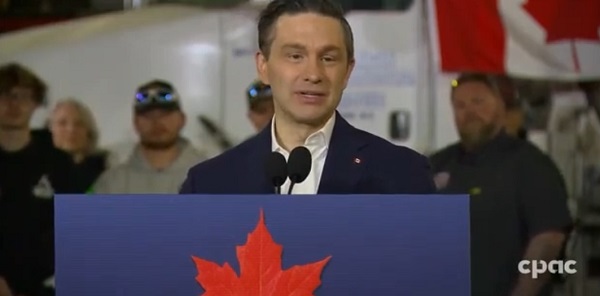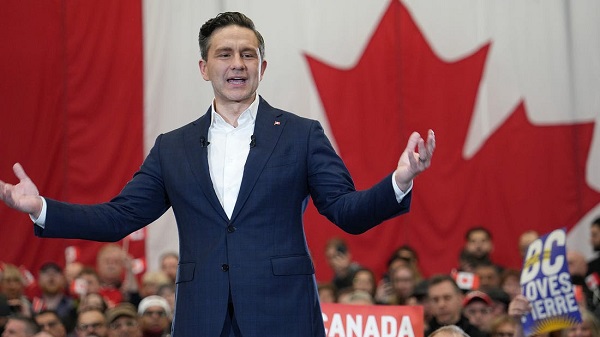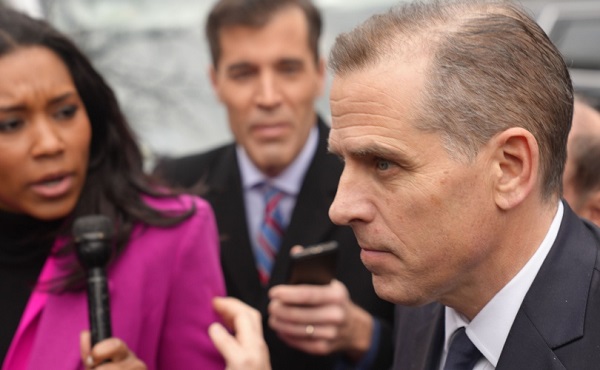Opinion
Lethbridge if 5th fastest growing city in Canada. Red Deer could learn from their direction.
Census 2016: Lethbridge fifth-fastest growing city in Canada
The upgrade in status is exciting news for the city.
“In a good year, we grow by two per cent and in a bad year we grow by two per cent,” Mayor Chris Spearman said. “I think that’s great for investors that we have rock-solid growth and I think it’s important for our city in terms of planning for infrastructure going forward into the future.
Spearman said the steady growth is mainly thanks to young families continuing to settle in the city.
“Projects like the Henderson pool and the leisure centre will certainly be of interest to young families,” Spearman said. “Having the second-largest leisure centre in Alberta is certainly going to be a magnet for growth in the future.”
Lethbridge’s own 2016 municipal census shows 96,828 residents, up 2.1% over 2015,, Red Deer’s own 2016 municipal census shows 99,832 residents, down 1% over 2015. Could it mean in 2017 Lethbridge would have a population of 98,261, while Red Deer would have a population in 2017 of 98,833?
The Mayor suggested growth could be due to accommodating young families, a large leisure centre, the Henderson Pool and no mention of downtown redevelopment. Could Red Deer learn from this? Lethbridge has Henderson Lake Park, which started as a man made slough. Red Deer has Hazlett Lake the largest lake in Red Deer just waiting for development.
Henderson Lake Park Henderson Lake Park is one of Lethbridge’s premier parks featuring a 24 hectare man made lake, mature trees and groves, gardens, picnic shelters, playgrounds and over 7 km of trails.
The Park is home to numerous annual community celebrations including Canada Day Festivities, the Lethbridge Rotary Dragon Boat Festival and many community runs and walks. Whether you’re a family with small children, an exercise or sports enthusiast, a non-motorized boating enthusiast, a fisherman, a horticulturists, or someone simply looking to get out for a walk this park is definitely for you.
The lake is perfect for kayaks, canoes and paddle boats alike and provides easy access to the water via the boat launch and dock. The dock is often used by fishermen looking to catch Pike, Perch or Whitefish (provincial fishing regulations apply).
Interested in how we keep the water clean at Henderson Lake.
For the nature, exercise, and history enthusiasts there is a 2.5 km trail around the lake and another 4.3 km trail around the perimeter of the park providing ample opportunity for one to stretch their legs, check out all of the local wildlife, or view the commemorative and historical markers and displays located throughout the park. There is also plenty of open space in the park which is often used for ultimate frisbee. There are also great little areas for you to put down a blanket and enjoy a good book, have a picnic or simply relax and watch the world as it goes by.
For families with children Henderson Lake Park has three playgrounds: one located on the north side of the Park just off Parkside Drive, one at the end of the park, and the third located behind the Henderson Lake Pool. The playgrounds feature climbing apparatus, slides and swings. The playground on the north side of the park near the dock is completely accessible. After the kids are done playing families can enjoy a picnic at one of the many picnic tables located throughout the park, or for something more formal one can book a covered picnic shelter.
Henderson Park is also home to the Demonstration and Rose Gardens. The Rose Garden is located in the northwest corner of the park and commemorates 9/11. The Demonstration Gardens are located east of the Tennis Courts and celebrates the contributions of Communities in Bloom to the Community.
Henderson Park is surrounded by a multitude of facilities like the SLP Skate Park, Henderson Horseshoe Pits, the Henderson Lake Golf Course, the Henderson Outdoor Pool, Spitz Stadium, Henderson Park Ice Centre, Henderson Tennis Courts and Nikka Yuko Japanese Garden.
Henderson Park has something to offer absolutely everyone and there isn’t a day where you won’t see families, exercise enthusiasts, seniors, people out exercising their dogs, fishermen, boaters, golfers, and just about everyone else under the sun out enjoying this wonderful park. From the photographic opportunities to the areas for quiet solitude and reflection to the exuberant playgrounds, to the trail system that is linked to the rest of the south side, this park is sure to meet everyone’s needs.
Hazlett Lake Park?
Hazlett Lake Park is ready for development. It is located north of 11A and just east of Hwy2. There is 3.000 acres up for development. Expectations of 20,000 plus new residents. It is the same distance from Taylor Bridge as the Collicutt Centre.
?
.Will the city learn from the success of Lethbridge and give this consideration? Blackfalds is the 2nd fastest growing community and some of their success comes from the Abbey Centre. Sylvan Lake is growing and it has a new recreational complex opening very soon. Penhold grew quickly after investing in their new multiplex.
The interesting thing is you do not hear much about successes being due to huge investments in downtown redevelopment. Some things to think about, right?
?
2025 Federal Election
Pierre Poilievre Declares War on Red Tape and Liberal Decay in Osoyoos


 Dan Knight
Dan Knight
Conservative leader unveils aggressive plan to slash bureaucracy, repeal anti-energy laws, and put “Canada First” after a decade of Liberal stagnation and American dependence.
There was a moment in Osoyoos, British Columbia, this week when you could feel the tectonic plates of Canadian politics shift. Pierre Poilievre didn’t just give a campaign speech—he delivered a declaration of war. Not against a rival party, not against a foreign power, but against the bloated, self-sustaining bureaucracy that has buried this country in red tape, crushed small business, and handed our economic sovereignty to Washington.
And he did it with names, numbers, and fire.
Standing beside Conservative candidates Helena Konanz and Dan Albas—real people with skin in the game—Poilievre laid out the most aggressive anti-regulation, pro-prosperity plan Canada has seen in a generation. This wasn’t “efficiency.” It wasn’t “modernization.” It was a full-scale rollback of the federal state.
A 25% cut to red tape within two years.
A “two-for-one” regulation kill rule: for every new rule, two must die.
A dollar-value offset: $1 of new administrative cost must be matched by $2 in cuts.
And for once, someone’s watching the swamp: the Auditor General will audit compliance.
No tricks. No loopholes. No gluing rulebooks together to fake progress like the Liberals did. Real cuts, enforced in public, with consequences.
Now compare that to what the Liberals have done. Under Justin Trudeau and now Mark Carney, the number of federal rules has exploded—149,000 and counting. That’s 20,000 more than a decade ago, with $51 billion in annual compliance costs for small businesses. It’s not just inefficiency. It’s economic sabotage.
And who benefits from that sabotage? The United States. Poilievre didn’t dance around it—he hit it head-on. President Trump has said he prefers the Liberals in power. Why? Because they’re weak. Because they keep Canadian oil in the ground and Canadian dollars flowing south.
“Trump supports the Liberals because he wants Canada to stay weak,” Poilievre said. “I want the opposite. I want to bring it home.”
The press tried to corner him—tried to paint him as “too Trump-like.” The irony, of course, is that Trump has openly rejected him, because unlike Trudeau and Carney, Poilievre is not for sale.
And then came the attacks on Aaron Gunn. The media paraded misinformation accusations that Gunn denied the impact of residential schools. Poilievre didn’t flinch. He called it out for what it was: misinformation. He defended his candidate. He stood for truth, not Twitter mobs. And he flipped the narrative: if you want prosperity and dignity for First Nations, give them control over resources, revenue, and jobs—not slogans.
Then came the issue of interprovincial trade, where Poilievre again showed he’s living in the real world. Local wineries in the Okanagan are shipping their product to the U.S. because it’s easier than selling across provincial lines. Under the Liberals, it’s harder to trade within Canada than with foreign nations. That’s not a federation—that’s a farce. Poilievre promised to tear down the internal barriers the Laurentian elite have protected for decades.
The CBC? He torched it. Not with culture war talking points, but with precision. It’s become an overfunded, Toronto-centric mouthpiece for the Liberal Party, sucking up $1.5 billion a year to produce less local coverage than ever. Mark Carney just promised another $150 million with no plan to pay for it. Poilievre called it what it is: “a morbidly obese Liberal government—on steroids.”
And he’s right. Carney hasn’t named a single Liberal expenditure he’d reverse. Not one. He’s offering the same broken promises, wrapped in fancier language, from the same corrupt team.
Poilievre, on the other hand, laid out a detailed plan to:
- Eliminate the GST on new homes and Canadian-made cars.
- Cut income taxes by 15%.
- Abolish the capital gains tax on money reinvested in Canada.
- Fast-track LNG projects on the West Coast.
- Repeal every anti-energy, anti-growth law passed by Trudeau’s swamp.
He didn’t ask for permission. He promised results. He’s not trying to manage the decline. He’s here to stop it.
Final Thoughts
I’ve been watching these press conferences like a normal person, which means with my jaw somewhere on the floor. On one side, you’ve got Pierre Poilievre, actually talking about numbers, policies, things that, you know—exist in the real world. On the other side? You’ve got Mark Carney, Trudeau’s old economic braintrust, grinning like a Bond villain, promising to “invest” another $150 million into the CBC—because apparently, $1.5 billion a year isn’t enough to produce wall-to-wall Liberal talking points and a half-hour panel on white fragility.
Carney calls it “public broadcasting.”
Let’s call it what it is: state propaganda—funded by you, weaponized against you.
And this is the guy who’s being sold to Canadians as the adult in the room? The savior? Mark Carney—the guy who’s spent the last decade not in Canada, but lecturing Canadians from London, New York, and climate finance panels in Geneva? He’s not some neutral economist. He’s a gold-plated Davos swamp rat who literally helped engineer the economic disaster we’re now living through—and now he wants to be rewarded with the keys to the kingdom?
This man flew in from Glasgow—no joke—where he was pushing his net-zero snake oil to a bunch of unelected bureaucrats who couldn’t find Fort McMurray on a map if their Tesla battery depended on it. And what’s he proposing now? Keep Bill C-69, the law that strangled Canadian energy, killed pipeline after pipeline, and handed America control over our oil wealth. Keep the law that says: If you want to build anything in this country, you better ask permission from 14 departments and Greta Thunberg’s cousin first.
Oh, and while he’s at it, don’t expect a single dollar of waste to be cut. Not one. Carney hasn’t named a single Liberal program he’d reduce. Not the CBC. Not the bloated bureaucracy. Not even the social engineering schemes buried deep in your child’s classroom.
So let’s spell it out: Mark Carney is Trudeau without the TikTok. Same worldview. Same smugness. Same ideology. Except now he’s dressed it up in Oxford accents and finance jargon and thinks you’re too dumb to notice.
He talks about “fighting climate change,” but never mentions the carbon imports from China. He talks about “building the future,” while propping up the same agencies that couldn’t build a bus stop on time. He talks about “standing up to Trump,” while literally keeping in place the laws that give Trump control over our energy, our jobs, our investment.
And we’re supposed to believe he’s the serious one?
No. What he is—is the avatar of managed decline. The velvet glove of the same iron fist that’s been throttling Canadian prosperity for ten years. Poilievre sees it, and he’s naming it. That’s why the media hate him. That’s why the Liberals fear him. And that’s why Donald Trump doesn’t want him elected—because he won’t roll over like Carney will.
So again—this is not a normal election. It’s not Liberal vs. Conservative. It’s not progressive vs. populist. It’s elite decay vs. national revival.
Poilievre doesn’t want to “manage” this slow-motion collapse. He wants to rip the duct tape off the pipes, shut down the bureaucracy, and start building again. He didn’t ask for permission. He didn’t host a panel. He promised results.
And when he says “Canada First,” it’s not some borrowed slogan. It’s a warning to the swamp: Your time is up.
Carney is decline dressed as competence.
Poilievre is the first sign of life this country has had in a decade.
So yeah, Pierre Poilievre chose defiance.
Now it’s your turn.
Subscribe to The Opposition with Dan Knight .
For the full experience, upgrade your subscription.
Alberta
Is Canada’s Federation Fair?


 David Clinton
David Clinton
Contrasting the principle of equalization with the execution
Quebec – as an example – happens to be sitting on its own significant untapped oil and gas reserves. Those potential opportunities include the Utica Shale formation, the Anticosti Island basin, and the Gaspé Peninsula (along with some offshore potential in the Gulf of St. Lawrence).
So Quebec is effectively being paid billions of dollars a year to not exploit their natural resources. That places their ostensibly principled stand against energy resource exploitation in a very different light.
You’ll need to search long and hard to find a Canadian unwilling to help those less fortunate. And, so long as we identify as members of one nation¹, that feeling stretches from coast to coast.
So the basic principle of Canada’s equalization payments – where poorer provinces receive billions of dollars in special federal payments – is easy to understand. But as you can imagine, it’s not easy to apply the principle in a way that’s fair, and the current methodology has arguably lead to a very strange set of incentives.
According to Department of Finance Canada, eligibility for payments is determined based on your province’s fiscal capacity. Fiscal capacity is a measure of the taxes (income, business, property, and consumption) that a province could raise (based on national average rates) along with revenues from natural resources. The idea, I suppose, is that you’re creating a realistic proxy for a province’s higher personal earnings and consumption and, with greater natural resources revenues, a reduced need to increase income tax rates.
But the devil is in the details, and I think there are some questions worth asking:
- Whichever way you measure fiscal capacity there’ll be both winners and losers, so who gets to decide?
- Should a province that effectively funds more than its “share” get proportionately greater representation for national policy² – or at least not see its policy preferences consistently overruled by its beneficiary provinces?
The problem, of course, is that the decisions that defined equalization were – because of long-standing political conditions – dominated by the region that ended up receiving the most. Had the formula been the best one possible, there would have been little room to complain. But was it?
For example, attaching so much weight to natural resource revenues is just one of many possible approaches – and far from the most obvious. Consider how the profits from natural resources already mostly show up in higher income and corporate tax revenues (including income tax paid by provincial government workers employed by energy-related ministries)?
And who said that such calculations had to be population-based, which clearly benefits Quebec (nine million residents vs around $5 billion in resource income) over Newfoundland (545,000 people vs $1.6 billion) or Alberta (4.2 million people vs $19 billion). While Alberta’s average market income is 20 percent or so higher than Quebec’s, Quebec’s is quite a bit higher than Newfoundland’s. So why should Newfoundland receive only minimal equalization payments?
To illustrate all that, here’s the most recent payment breakdown when measured per-capita:
 |
For clarification, the latest per-capita payments to poorer provinces ranged from $3,936 to PEI, $1,553 to Quebec, and $36 to Ontario. Only Saskatchewan, Alberta, and BC received nothing.
And here’s how the total equalization payments (in millions of dollars) have played out over the past decade:
Is energy wealth the right differentiating factor because it’s there through simple dumb luck, morally compelling the fortunate provinces to share their fortune? That would be a really difficult argument to make. For one thing because Quebec – as an example – happens to be sitting on its own significant untapped oil and gas reserves. Those potential opportunities include the Utica Shale formation, the Anticosti Island basin, and the Gaspé Peninsula (along with some offshore potential in the Gulf of St. Lawrence).
So Quebec is effectively being paid billions of dollars a year to not exploit their natural resources. That places their ostensibly principled stand against energy resource exploitation in a very different light. Perhaps that stand is correct or perhaps it isn’t. But it’s a stand they probably couldn’t have afforded to take had the equalization calculation been different.
Of course, no formula could possibly please everyone, but punishing the losers with ongoing attacks on the very source of their contributions is guaranteed to inspire resentment. And that could lead to very dark places.
Note: I know this post sounds like it came from a grumpy Albertan. But I assure you that I’ve never even visited the province, instead spending most of my life in Ontario.
Which has admittedly been challenging since the former primer minister infamously described us as a post-national state without an identity.
This isn’t nearly as crazy as it sounds. After all, there are already formal mechanisms through which Indigenous communities get more than a one-person-one-vote voice.
Subscribe to The Audit.
For the full experience, upgrade your subscription.
-

 2025 Federal Election1 day ago
2025 Federal Election1 day agoMark Carney refuses to clarify 2022 remarks accusing the Freedom Convoy of ‘sedition’
-

 2025 Federal Election1 day ago
2025 Federal Election1 day agoPoilievre To Create ‘Canada First’ National Energy Corridor
-

 Bruce Dowbiggin1 day ago
Bruce Dowbiggin1 day agoAre the Jays Signing Or Declining? Only Vladdy & Bo Know For Sure
-

 2025 Federal Election1 day ago
2025 Federal Election1 day agoFixing Canada’s immigration system should be next government’s top priority
-

 International11 hours ago
International11 hours agoTrump’s ‘Golden Dome’ defense shield must be built now, Lt. Gen. warns
-

 Catherine Herridge8 hours ago
Catherine Herridge8 hours agoFBI imposed Hunter Biden laptop ‘gag order’ after employee accidentally confirmed authenticity: report
-

 2025 Federal Election9 hours ago
2025 Federal Election9 hours agoDon’t let the Liberals fool you on electric cars
-

 Daily Caller1 day ago
Daily Caller1 day agoBiden Administration Was Secretly More Involved In Ukraine Than It Let On, Investigation Reveals



